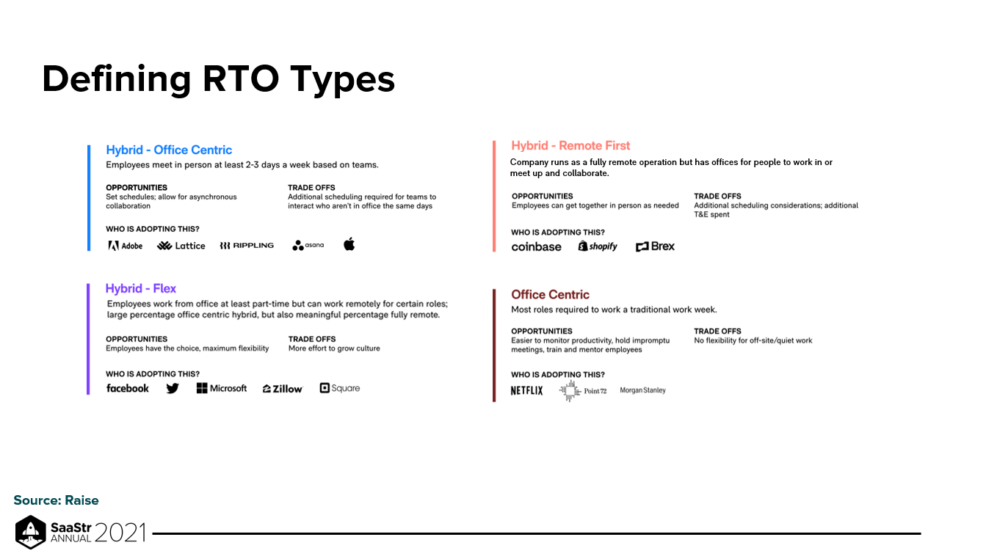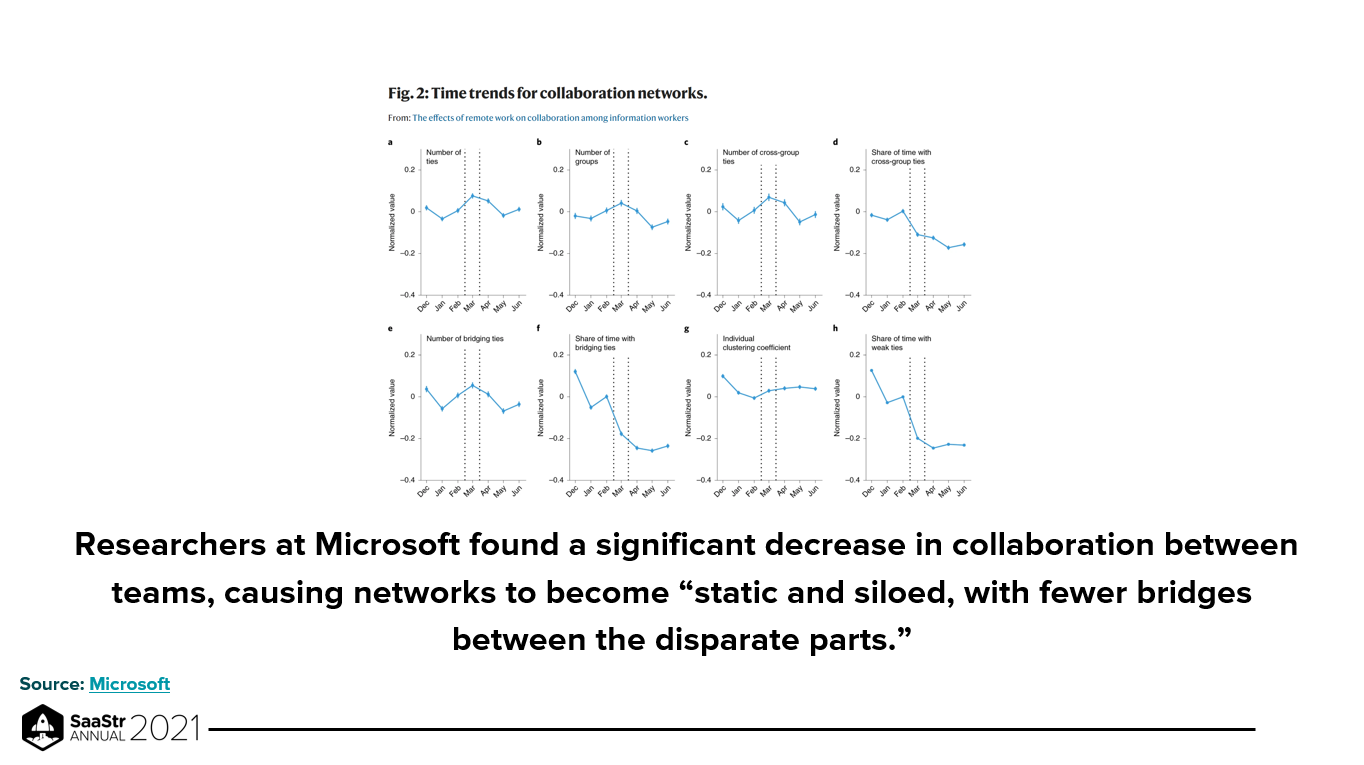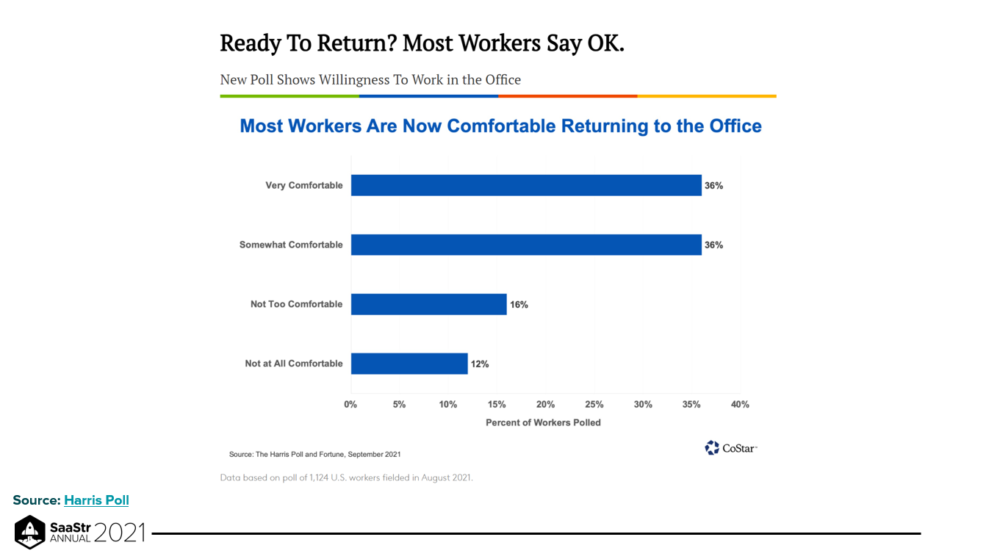What do you remember about your experience in the workplace prior to 2020? Is it the moments of collaborative synergy and collective achievements? Is it the feeling of solving complex problems and hitting milestones with your team? Perhaps it’s the joy of closing deals and celebrating with your colleagues?
It’s been more than two years since the pandemic interrupted our daily work life, and companies are taking stock and preparing for a return to the workplace. How can company leadership retain these important experiences of collaboration in the workplace and pair them with the opportunity and flexibility we’ve discovered since working remotely?
Raise CEO and Co-founder, Justin Bedecarre, and President, Felipe Gomez-Kraus, discuss how SaaS companies can build successful hybrid workplaces that are empathetic while incentivizing their team to return to the office.
Hybrid is the future
An analysis of top YC companies shows that 95 percent of these companies are going to have offices post-pandemic, and most of them will be hybrid.
Most of the iconic brands in technology are building hybrid workplaces.
Tech companies such as Chime, Loom, and Faire, have leased new offices in 2021, showing that many companies are getting ready to return to a physical workspace. Regardless of whether companies are office-centric or remote-first, all of them will need office space in the post-pandemic phase.
There are four approaches currently being employed by tech companies:
- Hybrid-office centric: Staff work from the office two to three days a week, and work remotely two to three days. Apple, Adobe, and Lattice have adopted this approach.
- Hybrid-remote first: The business operates with a primarily remote workforce, but it has hubs where staff can work from. Brex and Shopify follow this model.
- Hybrid-flexible: A percentage of the company is office-centric, and there is an option for certain teams to be remote. The workplace is there to complement both. Some of the largest companies in the world, including Facebook, Microsoft, and Twitter employ this hybrid-flex strategy.
- Office-centric: Most staff are required to follow a traditional work-week at the office. These are companies that want to get back to the same office environment as before the pandemic. This is the case with Netflix.
Why return to the office?
Microsoft conducted a study of 60,000 of their employees, and it found that while productivity was generally maintained, there was a significant decrease in collaboration between teams. While working remotely, people have been stuck in silos, and a lot of the joy in working with others, in developing relationships, has been lost.
With most companies on the cusp of going back to the office, you must ask: what does the return to the workplace mean in terms of your business? To start with, you must listen to your staff.
Employees today have a voice like never before. Employees are now used to being asked to voice their views on how, when, and where they work best. This is not a practice that should stop once the pandemic is in hindsight.
Staff must be surveyed over time, but be mindful to not make long-term decisions on short-term data. The dynamics are ever-evolving.
In June 2020, 80 percent of Facebook’s employees wanted to work remotely. Yet, eight months later, 80 percent wanted to return to the office part-time.
Stay flexible, continue to listen and gather data, then make the decision that’s best for your employees and the mission of your company.
Empathy and understanding
Anticipate that your staff may have some anxiety about returning to work for in-person interactions. Before asking your employees to return, you must take an empathetic view and listen to their needs. This way, you’ll be able to reduce friction and increase their trust.
Each employee will have different constraints and concerns that affect their needs. Our ability to understand where our employees want to be and meet them there is essential for a smooth return to the workplace.
Developing an office safety and access plan will continue to build trust as you open up your office space to your staff as they need it. The goal is to create the safest working environment possible where your team will be eager to return to and do their best work.
Key takeaways
As you prepare to return to the office, remember what it is about the physical workplace that makes it meaningful and purposeful. How does it create great experiences for your staff? The key is to go back to the roots of your business – its culture and its people.
Prioritize empathy and flexibility. Do not force your employees to come back to the office before they are ready, but create great incentives to make them want to return.
Create incentives for your employees to return to the office. Use the carrot, not the stick.
Raise learned through their San Francisco office that their employees were craving a social environment that is diverse and dynamic, as opposed to just a “sea of desks.” For example, hot-desking, spaces that bring people together, and weekly social events have shown to have a positive impact on their staff.
The bottom line is to help people remember what is special about being together. That’s what the workplace is all about.
The post SaaStr 537: How Hybrid is Working in Practice…What the Data Shows with Raise Commercial Real Estate CEO Justin Bedecarre and Felipe Gomez, President @ Raise appeared first on SaaStr.
via https://www.aiupnow.com
Amanda Beaty, Khareem Sudlow



